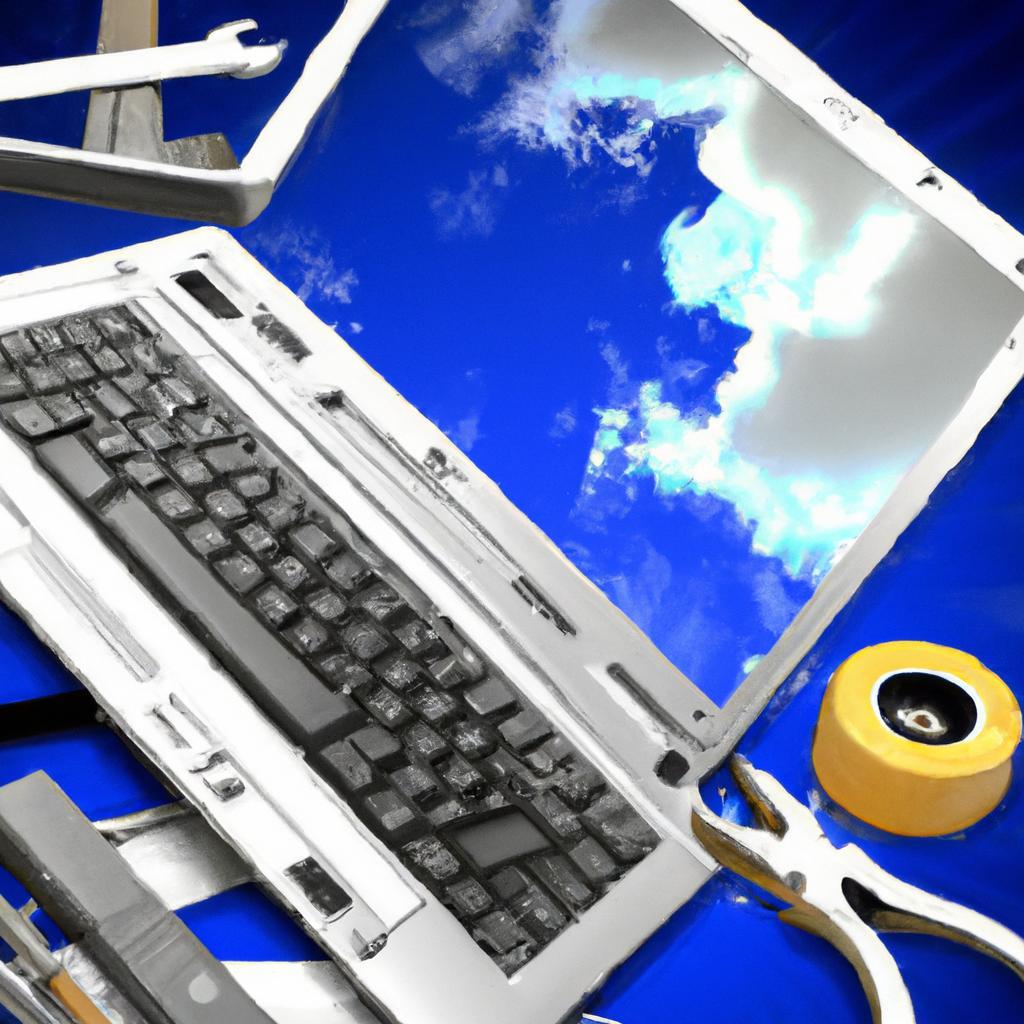
Essential Tools for DIY Computer Repairs and Upgrades
In the world of DIY computer repairs and upgrades, having the right tools at your fingertips can make all the difference between a successful project and a frustrating ordeal. Whether you’re swapping out a hard drive, installing more RAM, or troubleshooting a system error, having a well-stocked toolbox is essential. From screwdrivers and anti-static wrist straps to thermal paste and cable ties, we’ve compiled a list of must-have tools to help you tackle any computer-related task with confidence and ease. So roll up your sleeves, grab your toolkit, and let’s get started on upgrading your computer prowess!
Table of Contents
- Essential Diagnostic Tools for Identifying Computer Issues
- Must-Have Screwdriver Set for Opening Computer Cases
- Recommended ESD Protection Gear to Safeguard Your Components
- Useful Cable Management Tools for Neat and Efficient Upgrades
- Q&A
- In Summary
Essential Diagnostic Tools for Identifying Computer Issues
When it comes to troubleshooting and fixing computer issues on your own, having the right diagnostic tools is essential. These tools can help you identify hardware and software problems quickly and efficiently, saving you time and money in the long run. Here are some essential diagnostic tools that every DIY computer repair enthusiast should have in their toolbox:
- Diagnostic Software: Programs like CPU-Z, HWMonitor, and MemTest86 can help you monitor your computer’s performance, temperature, and memory health.
- Screwdriver Set: A quality screwdriver set with various sizes and types of screwdrivers is essential for opening up your computer case and accessing internal components.
- Anti-static Wrist Strap: To prevent static electricity from damaging sensitive computer components, an anti-static wrist strap is a must-have tool for any DIY computer repair.
| Tool | Function |
| CPU-Z | Monitor CPU performance |
| HWMonitor | Track temperature levels |
| MemTest86 | Test memory health |
Must-Have Screwdriver Set for Opening Computer Cases
When it comes to DIY computer repairs and upgrades, having the right tools is essential. One must-have tool for opening computer cases is a high-quality screwdriver set. With a reliable screwdriver set, you can easily access the internal components of your computer without causing damage.
Look for a screwdriver set that includes a variety of different screwdriver heads, such as Phillips, flathead, Torx, and hex. Having a diverse set of screwdriver heads ensures that you have the right tool for any type of screw you may encounter inside your computer case. Additionally, opt for a set that includes magnetic tips to prevent screws from getting lost inside your computer.
Recommended ESD Protection Gear to Safeguard Your Components
When working on DIY computer repairs and upgrades, it is essential to prioritize the protection of your components from Electrostatic Discharge (ESD) damage. To safeguard your valuable equipment, investing in the right ESD protection gear is crucial. Here are some recommended tools that you should consider adding to your toolkit:
- ESD Wrist Strap: A wrist strap is worn to safely discharge any static electricity on your body, preventing it from transferring to your components.
- ESD Mat: An anti-static mat provides a safe work surface, reducing the risk of ESD damage to your computer parts.
- ESD Safe Screwdrivers: Use screwdrivers with ESD-safe handles to avoid static discharge while working on sensitive components.
- ESD Safe Storage Containers: Store your components in conductive containers to protect them from static electricity when not in use.
Useful Cable Management Tools for Neat and Efficient Upgrades
When it comes to DIY computer repairs and upgrades, having the right cable management tools is essential for keeping everything organized and efficient. One useful tool to have on hand is a cable tie assortment pack. These small, reusable ties come in various sizes and colors, making it easy to secure and organize cables of different lengths. Another handy tool is a cable management sleeve, which helps conceal and protect cables while maintaining a clean and tidy appearance.
A cable management box is another great addition to your toolkit, providing a simple solution for hiding power strips and excess cables. Additionally, a cable clip holder can help keep cables in place and prevent them from tangling or getting in the way during upgrades. With the help of these essential tools, you can ensure that your computer setup remains neat, organized, and efficient, making future upgrades a breeze.
Q&A
Q: What are some essential tools every DIYer should have for computer repairs and upgrades?
A: Some essential tools include a screwdriver set, antistatic wrist strap, thermal paste, and cable management tools.
Q: Why is an antistatic wrist strap important when working on computers?
A: An antistatic wrist strap helps prevent static electricity from damaging sensitive computer components.
Q: What is the purpose of thermal paste in computer repairs?
A: Thermal paste helps improve heat transfer between the CPU and heatsink, keeping the processor cool and running efficiently.
Q: How can cable management tools improve the look and functionality of a computer?
A: Cable management tools help organize and secure cables inside the computer case, improving airflow and making it easier to access components for future upgrades or repairs.
In Summary
having the essential tools for DIY computer repairs and upgrades can save you time, money, and frustration in the long run. By investing in quality tools and familiarizing yourself with the necessary techniques, you can empower yourself to tackle a variety of computer issues with confidence. So whether you’re a seasoned tech enthusiast or a beginner looking to gain some new skills, having these tools at your disposal will ensure that you’re prepared for whatever challenges may come your way. Happy repairing!

